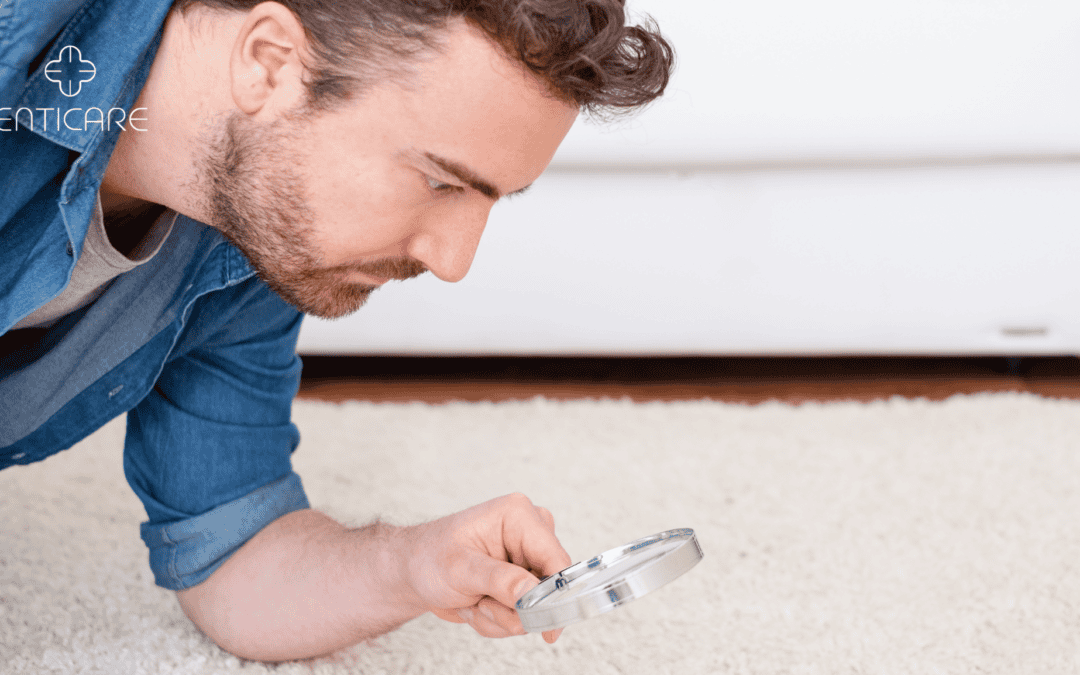Dust mites, those microscopic creatures lurking in our homes, can wreak havoc on our health. Understanding the signs, causes, and solutions to dust mite infestations is crucial to maintaining a healthy living environment.
Understanding Dust Mites: What Are They?
What are Dust Mites?
Dust mites are tiny, eight-legged creatures that thrive in warm, humid environments. These microscopic pests, which belong to the spider family, feed on the dead skin cells shed by humans and pets. Unlike bed bugs, dust mites do not bite, but they can trigger severe allergic reactions and asthma.
Where Do Dust Mites Live?
Dust mites love to reside in places where they can find plenty of food, warmth, and humidity. Common habitats include mattresses, pillows, carpets, upholstered furniture, and even stuffed toys. These areas provide an ideal environment for dust mites to multiply, making it essential to keep them clean and dry.
How Do Dust Mites Affect Health?
Dust mite allergens can cause a range of health issues, particularly for those with allergies or asthma. When inhaled, the proteins found in dust mite waste and body parts can trigger allergic reactions, leading to symptoms such as sneezing, runny nose, itchy eyes, and coughing. For asthma sufferers, exposure to dust mites can exacerbate symptoms and even cause asthma attacks.
Recognizing the Signs of Dust Mite Allergies
Common Allergy Symptoms
Dust mite allergies often present with symptoms similar to those of other airborne allergens. These can include persistent sneezing, a runny or stuffy nose, itchy or watery eyes, and an itchy throat or nose. These symptoms can worsen in the morning after a night spent in a dust mite proteins other-infested bed.
Asthma Symptoms
For individuals with asthma, dust mites can pose a more significant risk. Symptoms of dust allergy itself may include difficulty breathing, chest tightness or pain, a whistling or wheezing sound when exhaling, and trouble sleeping due to shortness of breath. It’s vital to manage these symptoms promptly to prevent severe asthma attacks.
Skin Reactions
Dust mite allergies can also affect the skin. Some people may develop eczema or allergic reaction, characterized by red, itchy, and inflamed skin. This condition can become chronic and may require medical treatment to manage effectively.
Identifying the Causes of Dust Mite Infestations
Environmental Factors
Dust mites thrive in warm, humid environments. Homes located in regions with high humidity levels are more susceptible to dust mite infestations. Even within homes, rooms like bedrooms and bathrooms, which tend to be warmer and more humid, can harbor higher populations of dust mites.
Household Habits
Certain household habits can inadvertently contribute to dust mite infestations. Infrequent cleaning house dust up, using carpets and heavy drapes, and neglecting to wash bedding regularly can all create a favorable environment for dust mites. Ensuring proper ventilation and cleanliness can significantly reduce dust mite populations.
Presence of Pets
Pets can also contribute to household dust and mite problems. Pets shed skin cells just like humans, providing an additional food source for dust mites. Keeping pets clean and grooming them regularly can help minimize this issue.
Effective Solutions to Eliminate Dust Mites
Cleaning and Maintenance
Regular cleaning and maintenance play a crucial role in controlling dust mites. Vacuuming carpets and upholstery with a HEPA filter vacuum, dusting surfaces with a damp cloth, and washing bedding in hot water weekly can significantly reduce dust mite populations.
Humidity Control
Maintaining low humidity levels and air conditioning in the home is essential for dust mite control. Using dehumidifiers and air conditioners can help keep humidity levels below 50%, making the environment less hospitable for dust mites. Additionally, ensuring proper ventilation in bathrooms and kitchens can prevent moisture buildup.
Hypoallergenic Bedding
Investing in hypoallergenic bedding, including mattress and pillow covers, can provide an effective barrier against dust mites. These covers prevent kill dust mites themselves from penetrating the fabric and accessing their food source, helping to reduce their numbers over time.
Seeking Professional Help
Allergy Testing and Diagnosis
If you suspect a dust mite allergy, seeking professional help is essential. An allergist can perform skin or blood tests to diagnose the dust mite allergy more accurately. Once diagnosed, the allergist can recommend appropriate treatment options, including medication and immunotherapy.
Professional Cleaning Services
In cases of severe dust mite infestations, professional cleaning services can provide a more thorough solution. These services use specialized equipment and techniques to completely eliminate dust mites from carpets, upholstery, and other hard-to-clean areas, providing relief from allergies and asthma symptoms.
Ongoing Management
Effective dust mite control often requires ongoing management. Regular follow-ups with an allergist, maintaining a clean home environment, and using preventive measures like hypoallergenic bedding can help keep dust mite populations in check and reduce allergy symptoms.
For more information on seeking professional help, check out the American College of Allergy, Asthma, and Immunology.
Take Action Against Dust Mites
Conquering dust mites requires a proactive approach to cleaning, maintenance, and professional help. By understanding the signs of dust mite allergy symptoms, causes, and solutions, you can create a healthier living environment free from these microscopic pests. Don’t let dust mites control your home and health.
Take the first step towards a dust and mite allergy-free home by scheduling an appointment with our experts. Visit Enticare to book your consultation today and start breathing easier!
By taking these steps, you can effectively manage dust mites and improve your overall health and well-being.

